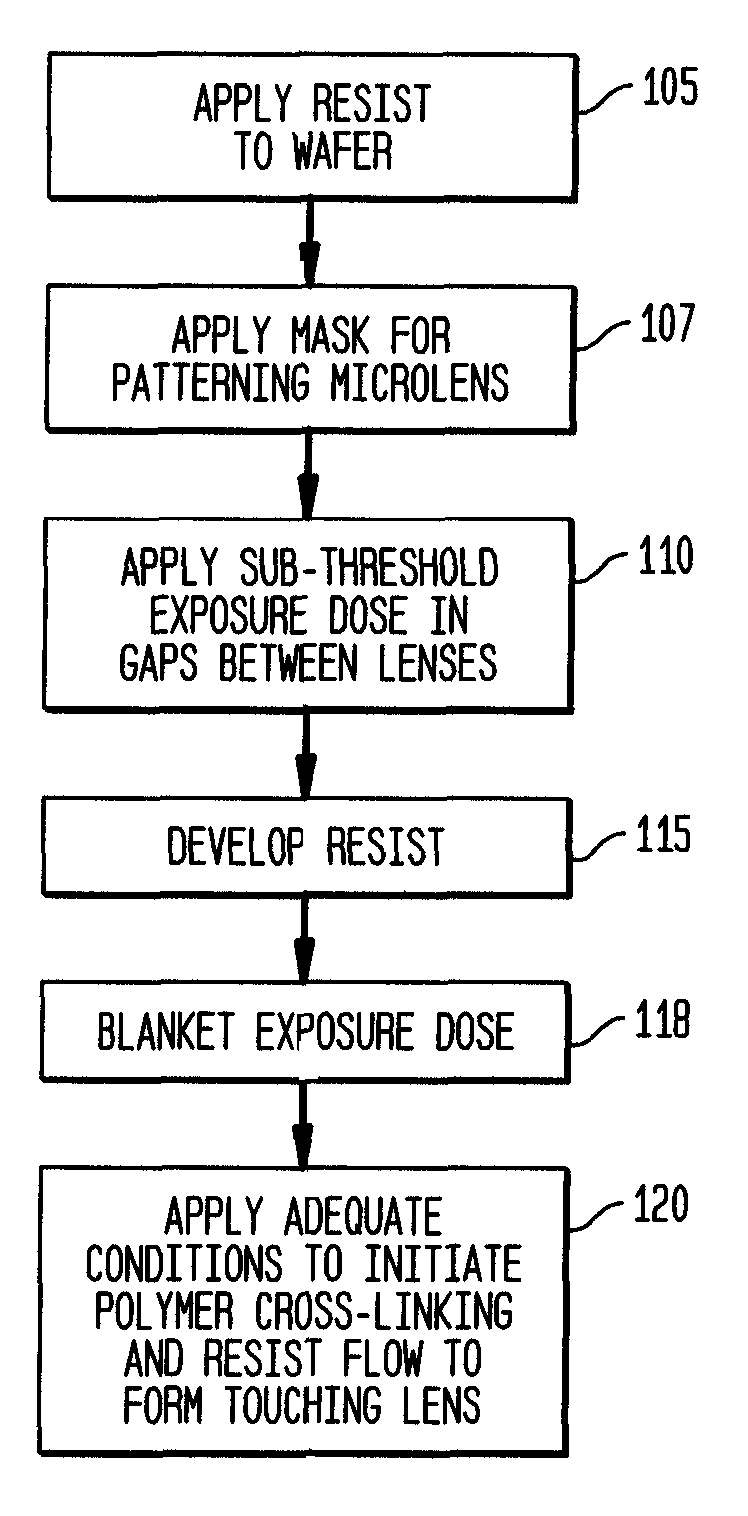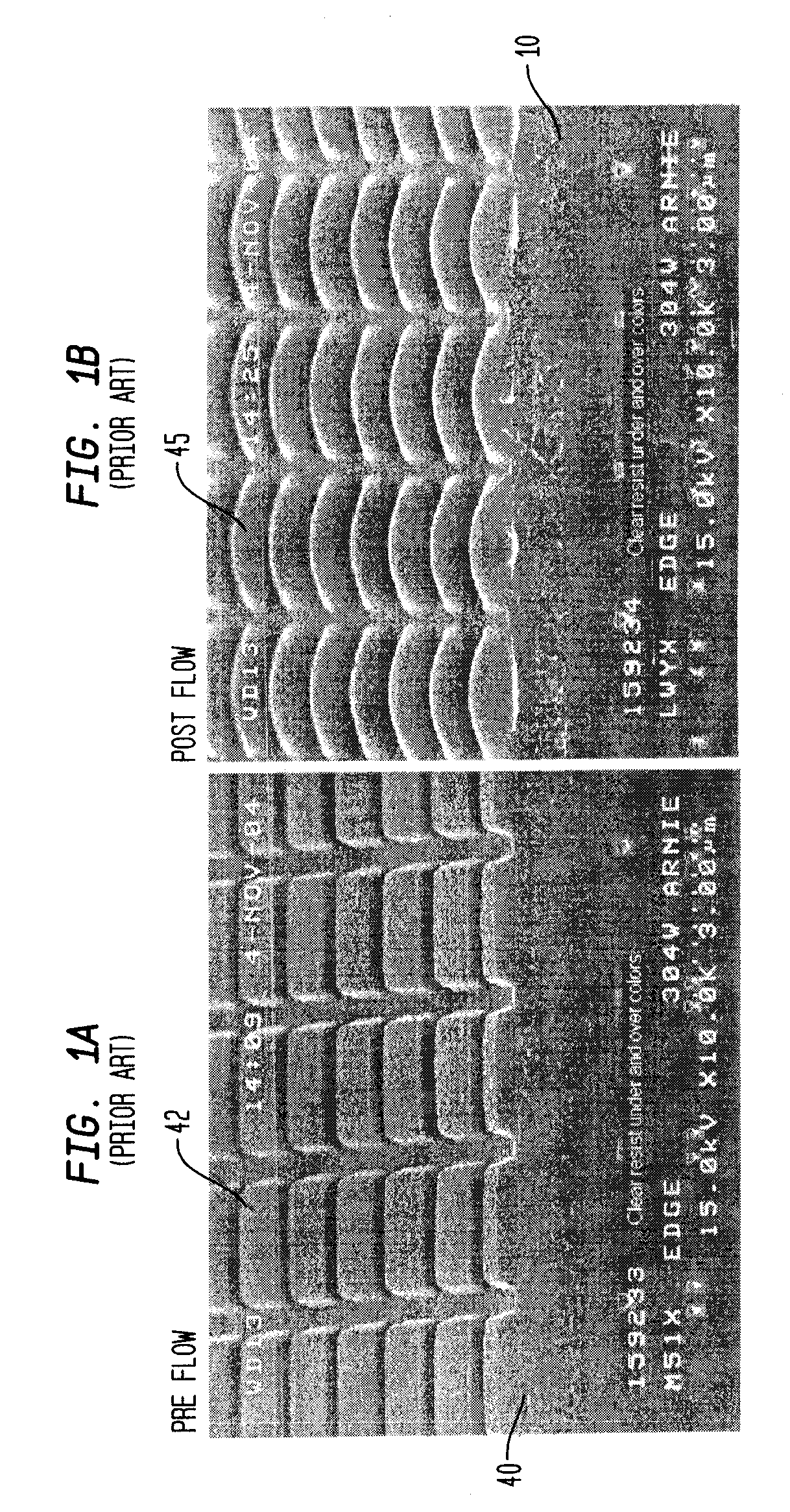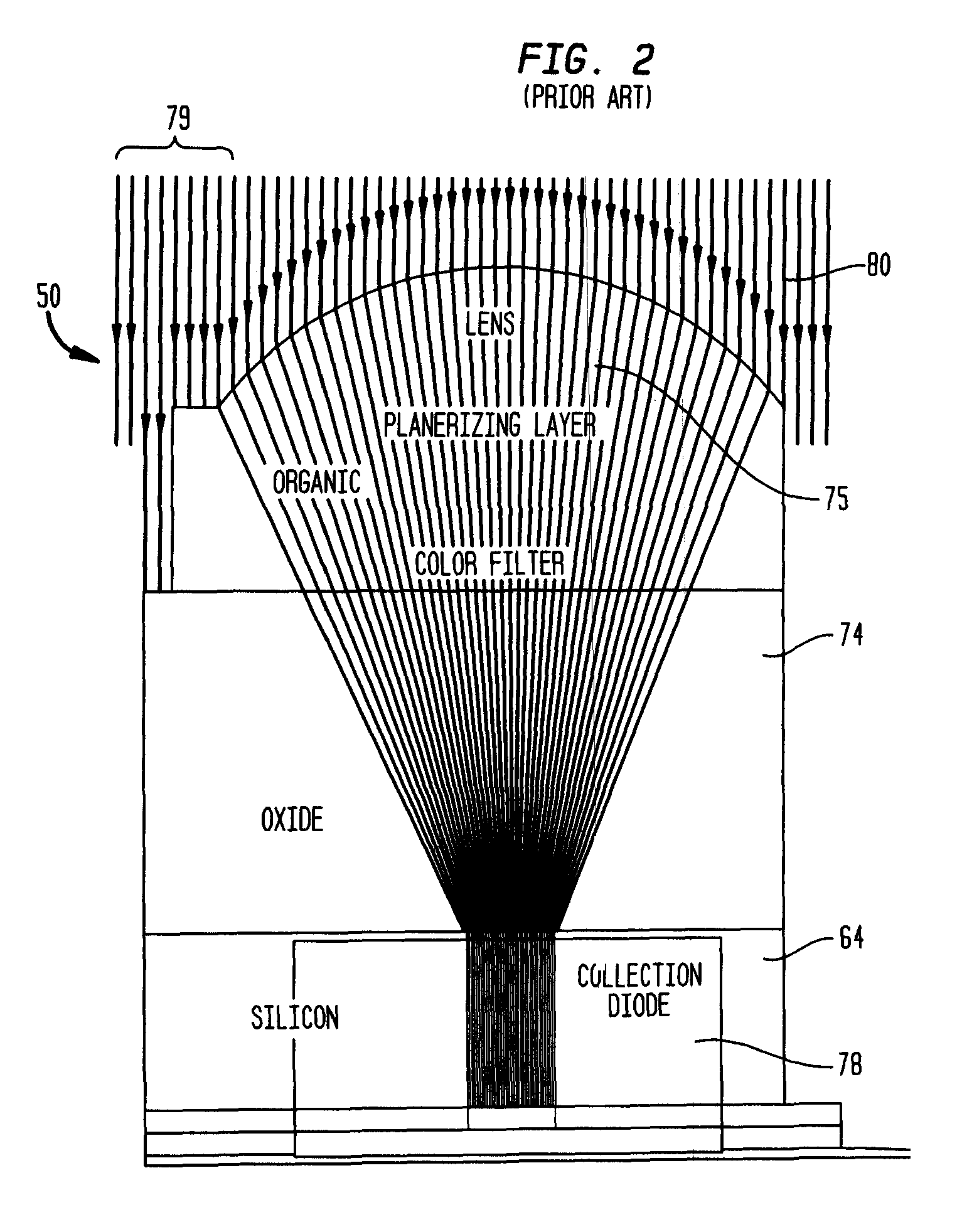Touching microlens structure for a pixel sensor and method of fabrication
a microlens and sensor technology, applied in the direction of instruments, photomechanical equipment, diffusion transfer processes, etc., can solve the problems of wasting more light between the lenses, microlens structures formed in this manner exhibit light loss between the lenses, etc., to increase the sensitivity of pixel sensors, eliminate the formation of gap space, effect of increasing sensitivity
- Summary
- Abstract
- Description
- Claims
- Application Information
AI Technical Summary
Benefits of technology
Problems solved by technology
Method used
Image
Examples
Embodiment Construction
[0022]A method for forming a webbed microlens structure according to the invention includes first flowing a patterned photoresist on providing a smooth planarization layer or equivalent substrate. However, to achieve touching of the microlenses, according to the invention, the photoresist pattern is “webbed” before flow. Webbing is achieved by a variety of methods: for instance, by controlling (e.g., reducing) the initial UV exposure dose; focusing can be set at a non-optimal value; develop time, temperature, or concentration can be reduced; or, the post exposure bake can be used to affect the rate of cross-linking polymers of the resist material. The mask image may additionally be compensated or the wavelength or numerical aperture (NA) / Sigma combination of the lithography tool altered to web the image. After application of one or more of these process modifications, the bottom of the photoresist in the transferred images connects to the bottom of the adjacent gap, i.e. a web is fo...
PUM
| Property | Measurement | Unit |
|---|---|---|
| temperature | aaaaa | aaaaa |
| radius | aaaaa | aaaaa |
| radius | aaaaa | aaaaa |
Abstract
Description
Claims
Application Information
 Login to View More
Login to View More - R&D
- Intellectual Property
- Life Sciences
- Materials
- Tech Scout
- Unparalleled Data Quality
- Higher Quality Content
- 60% Fewer Hallucinations
Browse by: Latest US Patents, China's latest patents, Technical Efficacy Thesaurus, Application Domain, Technology Topic, Popular Technical Reports.
© 2025 PatSnap. All rights reserved.Legal|Privacy policy|Modern Slavery Act Transparency Statement|Sitemap|About US| Contact US: help@patsnap.com



